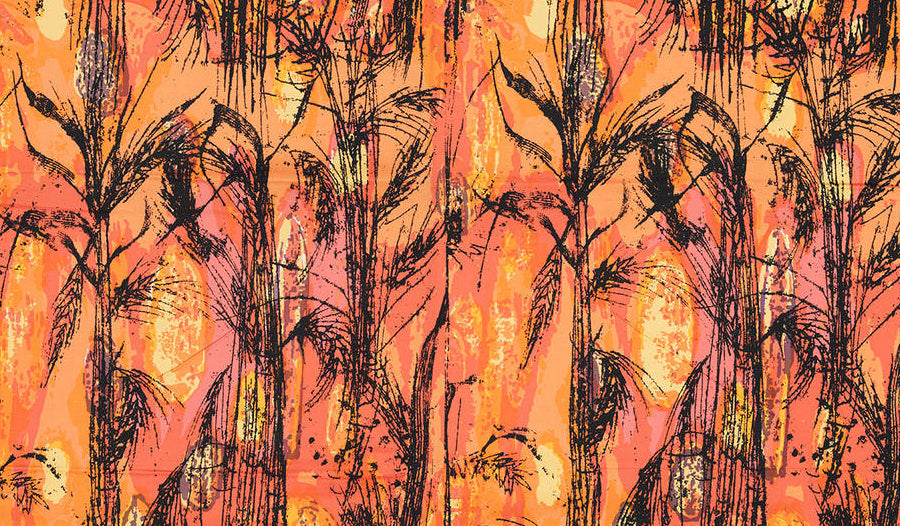
Althea McNish Remembered
 Image: Golden Harvest, furnishing fabric, designed by Althea McNish for Hull Traders Ltd., 1960s, UK. © Victoria and Albert Museum, London
Image: Golden Harvest, furnishing fabric, designed by Althea McNish for Hull Traders Ltd., 1960s, UK. © Victoria and Albert Museum, London
The textile designer Althea McNish (1924 - 2020) was among the first, if not the first woman from the West Indies to achieve international recognition in her field and was responsible for some of the 20th century’s most memorable fabrics. She claimed to see everything “through a tropical eye”, and her designs injected much-needed colour and life into post-war fashion and textiles from the late 1950s onwards, infusing British floral and botanical motifs with the vibrancy and feel of the Caribbean.

Image: Althea McNish in a 'bachelor girl's room' that she designed for the Ideal Home exhibition in London in 1966. Photograph@ Hodder/ANL/Rex/Shutterstock.
In 1951, 27 year-old Althea moved with her mother from Port of Spain in Trinidad to London, where her father was working. From a young age her mother, a well-regarded dressmaker, and her father, a writer and publisher, fostered within her a passion for drawing and painting — by her teens she was already presenting her work in exhibitions in Port of Spain at a time when the country was a thriving cultural centre edging closer to independence. She arrived in London with a strong interest in construction and won a scholarship to study architecture at the Architectural Association, but chose instead to enrol on a print course at the London School of Printing and Graphic Arts. After gaining a comprehensive grounding in screen printing and industrial processes she moved on to the Central School of Art and Design, where her tutor, sculptor Eduardo Paolozzi persuaded her to apply her print skills to textiles rather than fine art. An artist and designer, McNish honed her aesthetic and talent for printing, textile repeats and colourways to a level that ensured her control over industrial production processes, and enabled her to achieve depth and form with distinct layers of colour.
‘Whenever printers told me it couldn’t be done, I would show them how to do it. Before long, the impossible became possible.’

Image: Oriana, furnishing fabric, designed by Althea McNish for Hull traders Ltd., 1960s, UK. © Victoria and Albert Museum, London
In the final year of her postgraduate degree at the Royal College of Art, Althea took a trip to the Essex countryside where she encountered a wheat field for the first time, which reminded her of the sugar cane plantations of Trinidad. The trip and the organic forms she encountered in the English countryside made a significant impression on her and in 1959 she used the wheat motif in Golden Harvest — her first design for Hull Traders which was their best-selling design the year it was released and stayed in production until the 1970s. R
Recognising that consumers in Britain were desperate to move beyond the greyness of the post-war years — and McNish’s unique talent — chairman of London's Liberty department store Arthur Stewart-Liberty commissioned the young designer to creative new and exclusive designs for both fashion and furnishing fabrics. What followed was a varied and distinguished career, with her versatile and striking designs used in textiles, fashion, as well as being highly sought after for wallpapers and architectural murals. An important presence in the British design scene, she taught throughout her career and was an active member of the Caribbean Arts Movement (CAM), founded in London in 1966 with the aim of celebrating and promoting the work of artists, writers, filmmakers and musicians from across the Caribbean to the British public.
